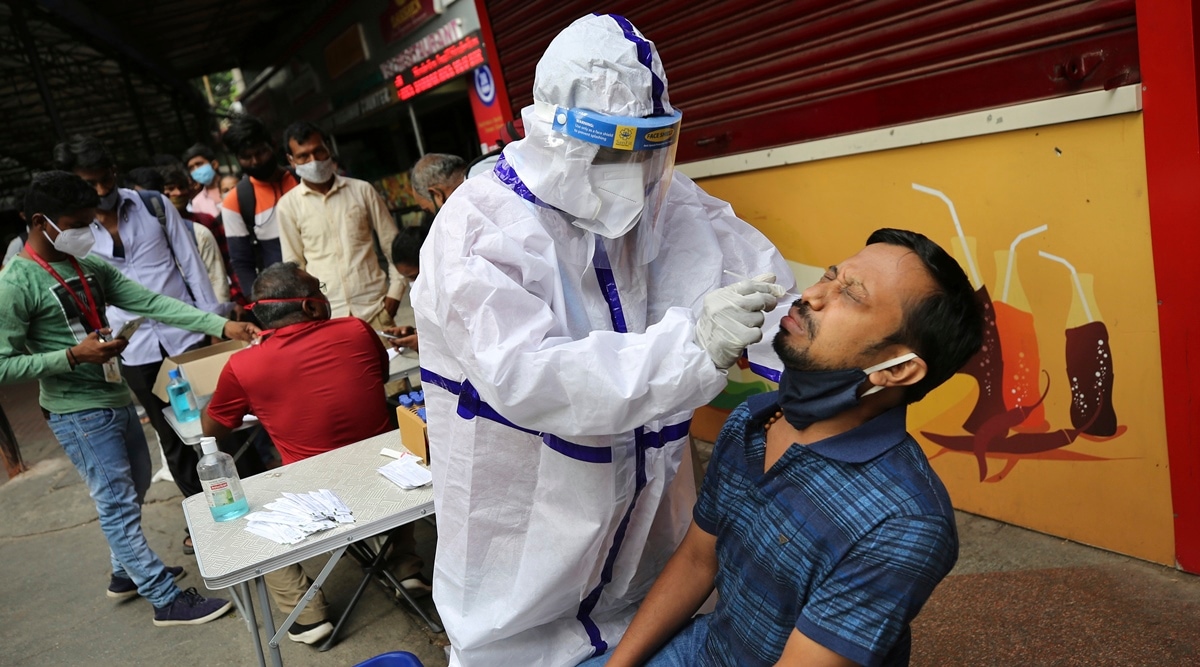People with mild COVID-19 disease are advised to be in home isolation

Amid COVID-19 cases soaring in the country, the Health Ministry has come up with fresh clinical guidelines for the management of adult patients with mild, moderate or severe conditions.
Here’s what they shared on their official website:
Treatment for mild COVID-19 case
Mild COVID-19 condition is identified as having upper respiratory tract symptoms (and/or fever) without shortness of breath or hypoxia. People who have these symptoms are advised to be in home isolation.
Must dos:
*Physical distancing, indoor mask use, strict hand hygiene
*Symptomatic management- hydration, antipyretics, antitussive, multivitamins
*Stay in contact with a treating physician
*Monitor the oxygen saturation and temperature
Seek medical attention if:
*Difficulty in breathing
*High-grade fever or severe cough, particularly lasting over five days
A low threshold is to be kept for people with high-risk features like:
*Age above 60
*Cardiovascular disease, hypertension and CAD (Coronary Artery Disease)
*Diabetes mellitus and other immunocompromised states
*Chronic lung or kidney or liver disease
*Cerebrovascular disease
*Obesity
May dos
Therapies based on low certainty of evidence
*Ivermectin (200mcg/kg once a day for three days); should be avoided by pregnant or lactating women
OR
*HCQ (400 mg twice on the first day followed by 400 mg once a day for four days unless contraindicated
*Inhalational Budesonide (given via metered dose inhaler or dry powder inhaler) at a dose of 800 mcg twice a day for five days to be given if symptoms persist for five days
Treatment for moderate COVID-19 case
This is identified as a patient’s respiratory rate being more than 24/min, breathlessness, or oxygen saturation is 90-93 per cent on room air.
The Health Ministry advised that such a patient should be admitted to a hospital.
Oxygen support
*The target SpO2 is 92-96 per cent in patients with chronic obstructive pulmonary disease
*Preferred devices for oxygenation: non-rebreathing face mask
*Awake proning encouraged in all patients who require supplemental oxygen therapy
Anti-inflammatory or immunomodulatory therapy
*Injection methylprednisolone 0.5 to 1 mg/kg in two doses or an equivalent dose of dexamethasone for five to 10 days
*Patients can be switched to oral route if stable and or improving.
Anticoagulation
*Conventional dose prophylactic unfractionated heparin or Low Molecular Weight Heparin (weight based e.g., enoxaparin 0.5mg/kg per day SC). There should be no contraindication or high risk of bleeding.
Monitoring
*Clinical Monitoring: Work of breathing, Hemodynamic instability, Change in oxygen requirement.
*Serial CXR; HRCT chest to be done only If there is worsening.
*Lab monitoring: CRP and D-dimer 48 to 72 hrly; CBC, KFT, LFT 24 to 48 hrly; IL-6 levels to be done if deteriorating (subject to availability).
Treatment for severe COVID-19 case
This is identified as patient’s respiratory rate being more than 30/min, breathlessness or oxygen saturation is less than 90 per cent on room air.
Such patients should be admitted to ICU.
Respiratory support
*Consider use of NIV (Helmet or face mask interface depending on availability) in patients with increasing oxygen requirement, if work of breathing is low.
*Consider use of HFNC in patients with increasing oxygen requirement.
*Intubation should be prioritised in patients with high work of breathing /if NIV is not tolerated.
*Use conventional ARDSnet protocol for ventilatory
management.
Anti-inflammatory or immunomodulatory therapy
*Injection methylprednisolone 1 to 2mg/kg IV in 2 divided doses (or an equivalent dose of dexamethasone) usually for duration of 5 to 10 days.
Anticoagulation
*Weight-based intermediate-dose prophylactic
unfractionated heparin or Low Molecular Weight Heparin (e.g., Enoxaparin 0.5mg/kg per dose SC BD). There should be no contraindication or high risk of bleeding.
Supportive measures
*Maintain euvolemia (the presence of the proper amount of blood in the body); if available, use dynamic measures for assessing fluid responsiveness.
*If sepsis/septic shock: Manage as per existing protocol and local antibiogram.
Monitoring
*Serial CXR; HRCT chest to be done ONLY if there is worsening.
*Lab monitoring: CRP and D-dimer 24-48 hourly; CBC, KFT, LFT daily; IL-6 to be done if deteriorating (subject to availability).
Source: Read Full Article